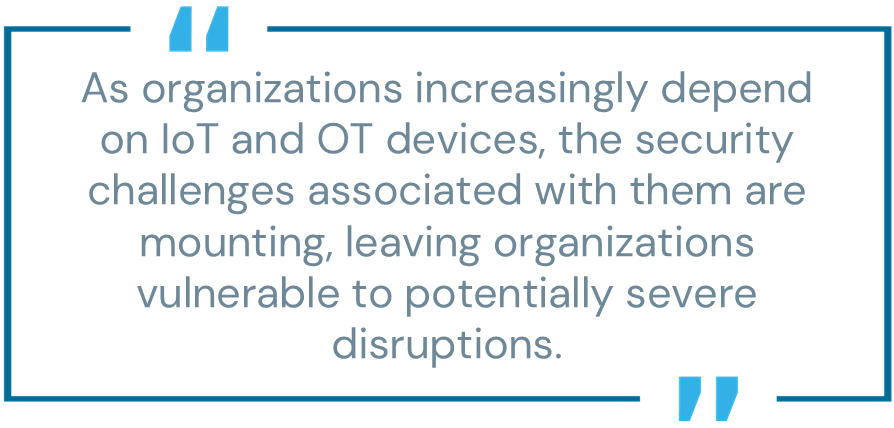How to Protect Your IoT and OT Devices from Cyberthreats

The rise of the Internet of Things (IoT) and Operational Technology (OT) devices is reshaping industries, accelerating innovation and driving new efficiencies. However, as organizations increasingly depend on these devices, the security challenges associated with them are mounting. Traditional security measures often fall short in protecting these critical assets from cyberthreats, leaving organizations vulnerable to potentially severe disruptions.
IoT and OT devices are now essential to sectors like manufacturing, healthcare, energy and transportation. These devices collect enormous amounts of data, control critical processes and often work in environments where downtime isn’t an option. Yet, their rapid proliferation has brought with it significant security concerns. Many of these devices were not designed with comprehensive security in mind, making them prime targets for cyberattacks.
Managing Privileged Access in IoT and OT Environments
An attack on these systems can have severe consequences, ranging from operational disruptions to regulatory penalties and reputational damage. As these environments become more interconnected, the need for strong, proactive security measures to protect them has never been more urgent.

Managing privileged access is one of the most pressing challenges for IoT and OT environments. Privileged credentials grant elevated permissions that are critical for managing devices and systems. If attackers gain access to these credentials, they can control devices, manipulate processes, steal data or create significant operational disruptions. This makes privileged access management (PAM) a key area of focus in the cybersecurity strategy for any organization reliant on IoT and OT technologies.
Unifying Security Efforts and Building Resilience
IoT and OT security have historically been siloed from traditional IT security efforts, often leading to gaps in overall security postures. However, a more unified approach is required as digital transformation continues to blur the lines between these environments. Organizations are increasingly recognizing the need to bridge these gaps by adopting strategies encompassing both IT and OT systems, creating a more cohesive security framework that can adapt to new threats and vulnerabilities.
To build a more resilient security posture, organizations must look beyond traditional IT security controls and extend their security practices to encompass IoT and OT devices. This involves integrating identity and access management (IAM) solutions tailored to the unique needs of these environments. By doing so, organizations can centralize control over privileged access, helping to prevent unauthorized access and reduce the risk of credential theft and misuse.
Another critical element in securing IoT and OT environments is gaining visibility into how these devices are accessed and used. With the proper monitoring tools and protocols, organizations can detect and respond to potential threats in real time, rather than reacting after a breach has already occurred. This proactive approach can help mitigate the impact of attacks, ensuring that operations remain secure and uninterrupted.
Navigating Compliance and Preparing for the Future
As regulatory requirements around data security become more stringent, organizations face increased pressure to demonstrate that they are taking all necessary steps to protect their assets, including IoT and OT devices. Implementing comprehensive security measures that include monitoring, documentation and controls over privileged access helps organizations maintain compliance and avoid potential fines or other penalties.
The security challenges associated with IoT and OT devices are not going away. As these technologies continue to evolve and proliferate, so will the tactics of those who seek to exploit them. To keep pace, organizations must adopt a forward-thinking approach to security that includes the tools and technologies necessary to protect these devices and a mindset geared toward constant adaptation and improvement.
By embracing a comprehensive strategy integrating IoT and OT security with existing IT practices, organizations can build greater resilience against today’s threats while preparing for tomorrow’s unknown challenges.
Securing the Future of Connected Manufacturing
As the manufacturing industry embraces connected technologies, security becomes critical to operational resilience. Watch our recent webinar, “Shape the Future of Secure, Connected Manufacturing with Industry Leaders,” to explore how leading organizations are shaping the future of secure, connected manufacturing. Discover how Microsoft, Device Authority and CyberArk are collaborating to develop a next-generation security solution tailored to manufacturing environments for enhanced protection against evolving cyberthreats.
Ryne Laster is a product marketing manager at CyberArk, and Tyler Gannon is vice president of North America Ops at Device Authority.